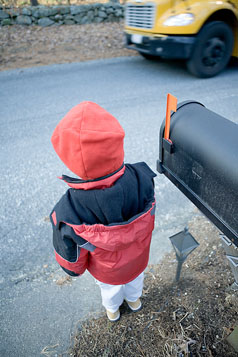Pedestrian Safety Statistics
Children are at an increased risk for pedestrian injury and death because traffic rules and risks often exceed their cognitive, developmental, behavioral, physical, and sensory abilities, according to the National SAFE KIDS Campaign. In addition, parents and caregivers often overestimate their child's traffic skills. Pedestrian injuries remain the second leading cause of unintentional injury-related death among children ages five to fourteen.
Safety Tips
Preventing Injuries to Child Pedestrians
Parents are the most important models of proper pedestrian behavior for children.
- Children under the age of ten should not be allowed to cross the street by themselves.
- Cross streets safely. Cross at a corner, using traffic signals and crosswalks. Try to make eye contact with drivers before crossing in front of them. Don't assume that because you can see the driver, the driver can see you. Look left, right and left again when crossing, and keep looking as you cross.

- Teach children to recognize pedestrian crossing signals but not to rely on them. Before crossing, children should also be sure the traffic has stopped. Remind them to continue across if the light changes to "Don't Walk" while they are in the crosswalk.
- Walk on sidewalks or paths. If there are no sidewalks, walk facing traffic as far to the left as possible.
- Be a safe pedestrian around cars. Watch for cars that are turning or backing up. Parents and children should hold hands in parking lots.
- Remind your children to be extra alert in bad weather. Visibility might be poor and motorists might not be able to see them or to stop quickly enough.
- At dawn and dusk, children should wear reflective clothing and carry flashlights.
- Children should wait for adults on the same side of the street where the school bus loads and unloads students.
- Teach children to cross the street at least 10 feet in front of a school bus.
Set pedestrian safety rules for your children.
- Never allow children under age 10 to cross streets alone. Adult supervision is essential until you are sure a child has good traffic skills and judgment.
- Children should walk on direct routes with the fewest street crossings.
- Make sure children know to cross 10 feet in front of a school bus, never behind, and to wait for adults on the same side of the street as the school bus loading or unloading zone.
- Teach your child never to run out into a street for a ball, a pet or any other reason.
Help create an environment that's safe for pedestrians.
- Make sure your child plays in safe places away from motor vehicles, such as yards, parks and playgrounds - never in the street. Fence off play areas from driveways and streets.
- Buy clothing and accessories incorporating reflective materials for your family to wear at dawn and dusk, in the evening and during other low-light situations, such as rainy or foggy weather.
- Check frequently for children when backing out of a driveway or a parking space.
Follow the same rules that you want your child to follow. Be a good "road" model by obeying traffic signals and markings. Even if your children aren't with you, someone else's children may follow your example.
